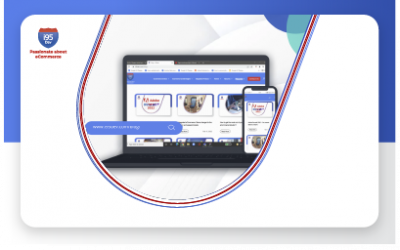According to US Department of Commerce, eCommerce sales in U.S. remained strong in 2015 with web sales totaling $341.7 billion (and forecasted to reach more than $500 billion by 2020). Sporting goods industry was one among the top industries contributing nearly $10 billion in e-commerce sales. Nearly 200 million U.S. citizens shopped through mobile internet and social media networks, contributing 15% to total consumer sales of sporting goods ($63 billion).
There is no denial that sporting industry is one of the most competitive and dynamic industry for businesses. The constantly changing models of sports equipment, rising competition, extremely cost sensitive consumer and the seasonality of sports, to name a few, make their needs unique and keep businesses always on their toes.
E-commerce, changing the Course of the Sporting Goods Industry
Sporting Goods industry has its unique set of challenges. The sector today mostly caters to a young, tech-savvy, and restless generation (Gen Y and Gen Z). The emergence of trends like activewear or athleisure indicate the changing tastes and preferences of the target audience. ‘Atlhleisure’, now included in the Merriam-Webster dictionary, is defined as “casual clothing meant to be worn for exercising and general use”. Technology and trends such as these are changing the path of the traditional sporting goods industry, with innovation and early technological adaptability being the only way to stay ahead of the curve.
Sporting Authority “Strike Out” vs. Dicks Sporting “Home Run”
The implosion of Sports Authority signaled the rapid winds of change sweeping across the sector. During their prime, Sports Authority boasted of 450 plus retail outlets across the length and breadth of the United States of America. By 2016, they managed to rack up a debt of $1.1 billion and finally filed a Chapter 11 bankruptcy petition leaving everyone wonder, why could not Sports Authority survive the storm?
Sports Authority just couldn’t stay afloat the rising tide. During the holiday season of 2015, there was a sharp decline in the footfall and sales at physical stores, while online sales witnessed a 25% increase. According to some reports, this was not an overnight phenomenon. The footfalls in the physical stores was already on the decline for last three years. Failing to grasp the changing trend, Sports Authority continued to rely solely on its physical stores and suffered a mortal blow.
Many shoppers expressed, “Our needs have evolved but Sports Authority hasn’t “. This sentiment sounded the death knell for the sporting giant.
On the other side, Sports Authority competitor Dick’s Sporting saw its sales and revenue go north. Dicks Sporting was quick to adopt e-commerce and had a strong head start over its competitors in adopting the online platform. Consider this, for the second quarter ended July 31, 2016, Dick’s reported
- E-commerce represented 8.5% of sales in the quarter versus 7.3% a year earlier.
- Total sales of $1.968 billion, up 7.9% from $1.823 billion a year earlier. That suggests online sales increased 25.7% to $167.3 million from $133.1 million in the year-ago quarter.
And for the first nine months of fiscal 2016, Dick’s has reported:
- Net sales of $5.439 billion, an 8.1% increase from $5.031 billion during the first nine months of fiscal 2015.
- Based on the company’s report of online sales as a percentage of total sales, web sales are up more than 24% to $494 million from $397 million during the same period last year.
Dick’s Sporting could achieve this only because of their focus on early adoption of the digital technology. They had 650 plus retail outlets across the U.S., but unlike Sports Authority, they successfully read the shift in customers shopping pattern.
Their first move was to implement a multi-tenant platform to support its multiple e-commerce stores. This added a new vigor to their sales strategy – “We were ready to sharpen our vision around digital”, quoted Rafeh Masood, Vice-President of Customer Innovation Technology.
The e-commerce adoption in the sporting goods industry and the general e-commerce trend is a promising sign and a clear indication of the growth potential that e-commerce has. In this blog, we will look at a few challenges retailers in the sporting goods industry face, and how e-commerce can help them overcome those challenges.
1) Getting Out of Touch (Athleisure/Joining E-commerce)
Sporting Goods industry is one of the most dynamic industries with constantly changing trends and product interests. The evolution of sporting paraphernalia is so quick that Brent Schmelz, the CEO of Soccer Post retail chain, remarked, “The sporting goods industry is in a state of upheaval”.
Retailers dread getting stuck with old inventory, old model or a seasonal product, and later sell them below cost. At the same time, they do not want to lose sales because of unavailability of stock. Sports Authority the sporting behemoth had to close its operations in 2016. Among other things, customers stated that the lack of new products made them switch brands to competitors.
An e-commerce store can help sporting goods industry retailers deal with this by giving them an alternate channel to reach their customers, reaching far more customers than they would otherwise with only their brick-and-motor stores.
2) Effective Marketing and Promotion
Considering the seasonality of products, time is of great essence in the sporting goods industry. Beyond leveraging e-commerce’s marketing and promotion capability to segment & target customers effectively, a multi-channel marketing strategy will help retailers convert customers easily.
Consider this
- E-commerce platform can be leveraged to inform and educate customers about new products, and a multi-channel promotional strategy can be used to entice them to make purchases (across e-commerce store, physical store, etc.).
- With e-commerce and social media integration, social reviews can be leveraged to build trust faster and improve conversions.
- E-commerce platforms cross-selling and up-selling features can be leveraged to increase average order value, customer lifetime value and improve customer experience. Consider a scenario where a client is interested in a certain baseball pitcher glove, recommending him for a baseball cap, gum guard or even a pitcher ball would be an added advantage.
3) Rising Competition
Sporting goods industry is one of the most competitive industries with a number of retailers fighting to get a bigger share of the pie every season. Depending on your business model you compete with sporting goods stores, specialty sports shop, specialty fitness, pro shops, department stores, discount stores, warehouse clubs, e-commerce stores, manufacturers, and more. Add to that the increasing threat from online marketplaces like eBay and Amazon.
On a tactical level, early adaptors of e-commerce are the ones who can survive the storm. An e-commerce system can help you compete by letting you sell online and meeting your customers where they are. Further, the e-commerce store can be leveraged to sell the products on eBay and Amazon as well.
4) Effective Inventory Management
In sporting goods industry effective prediction and forecasting are important; retailers have the challenge of effectively forecasting their sales and procuring inventory to avoid any dead inventory while avoiding any losses because of unavailability of inventory.
This can be further complicated with sales happening over multiple channels such as physical stores, e-commerce stores, online marketplaces, and more. Kasia Wenker, Director of Distribution and Sales, ITS Logistics states, “To fulfill all those channels requires flexibility and technology because they all vary in size and requirements”.
An e-commerce store can not only help you increase sales and churn inventory faster but also enable you to manage inventory better. How? By integrating your e-commerce store with your ERP/POS/inventory management system. With centralized inventory, you will not only avoid over-selling and under-selling your inventory, but also manage procurement effectively.
5) Decreasing Margins
This is one of the biggest issue worrying most retailers in sporting goods industry. There has been a marked decrease in the profit margins due to increasing labor costs, rising material costs, and rising warehousing costs. To add to that, the possibility of dead stock compound their woes. For retailers to stay profitable, they have no other option but to decrease their operating expenses.
The direct-to-consumer method can be followed which helps in cutting down the commission fee of the middle man, this is possible only by adopting e-commerce platform.
An e-commerce store can help retailers do just that. An e-commerce store can help retailers leverage their existing inventory to drive more sales. They also enable retailers to leverage options like buy online and pickup in store, etc. to eliminate the costs of maintaining unwanted physical stores. In addition, with the right integrations in place, retailers can further sell on platforms like eBay and Amazon with little incremental cost and effort.
How i95Dev Can Help?
i95Dev is a leading provider of next-generation integrated eCommerce solutions powered by Magento. Our eCommerce solution seamlessly integrates with ERP (GP, AX, NAV), POS, CRM (Dynamics CRM, Salesforce) systems and online marketplaces like eBay and Amazon. We understand sporting goods industry very well and have worked with a number of retailers and distributors from the industry. For more information, you can reach us at 301.760.7499 or drop us a line at i95Dev.com/contact.
Recent Blogs
22 benefits ecommerce home decor furniture businesses
22 Benefits of eCommerce for Home Décor and Furniture Businesses Author Category Share Home décor and furniture businesses are increasingly turning to eCommerce to elevate their operations...
Home Improvement Industry: 11 Key eCommerce Features Consider
Elevating Home Improvement eCommerce: 11 Must-Have Features for a Seamless Shopping Experience Author Category Share In the dynamic landscape of home improvement, furniture, and lifestyle,...
Complete Guide to Automotive eCommerce Growth, Trends, Challenges, Solutions
A Comprehensive Guide to Accelerate Your Automotive Business Growth with eCommerce Author Category Share Introduction The automotive industry has undergone a significant transformation in...





